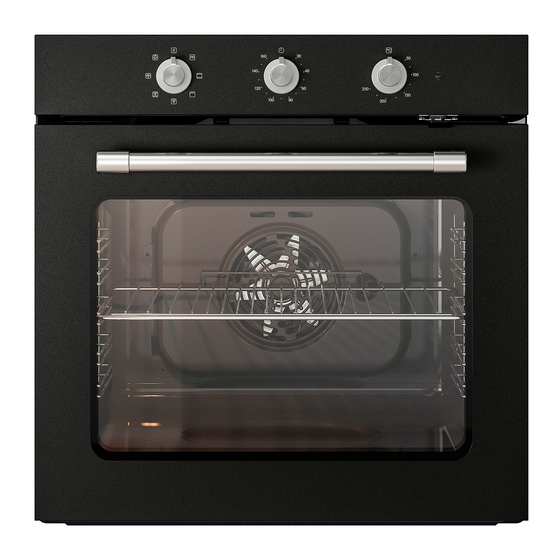ENGLISH
•
Clean the surfaces with a damp cloth.
If it is very dirty, add a few drops of
washing up detergent to the water.
Finish off with a dry cloth.
Oven interior
IMPORTANT: do not use abrasive
i
sponges or metallic scrapers or scourers.
Over time, these can ruin enamelled surfaces
and the oven door glass.
•
After every use, allow the oven to cool
then clean it preferably while it is still
warm in order to remove built-up dirt
and stains caused by food residues (e.g.
food with a high sugar content).
•
Use proper oven detergents and follow the
manufacturer's instructions to the letter.
•
Clean the door glass with a suitable
liquid detergent. The oven door can
be removed to facilitate cleaning (see
MAINTENANCE). Inner glass is smooth
to facilitate cleaning.
NOTE: during prolonged cooking of foods
with a high water content (e.g. pizza,
vegetables, etc.) condensation may form on
the inside of the door and around the seal.
When the oven is cold, dry the inside of the
door with a cloth or sponge.
WARNING!
-
During and after the Pyrolytic cleaning,
every pets (especially birds) have to
be kept away from the area of the
appliance location.
Accessories
•
Soak the accessories in water with
washing up detergent immediately after
use, handling them with oven gloves if
still hot.
•
Food residues can be easily removed
using a brush or sponge.
MAINTENANCE
WARNING!
-
Use safety gloves.
-
Ensure the oven is cold before carrying
out the following operations.
-
Disconnect the oven from the power supply.
To remove the shelf guides
firmly grip the external part of the guide,
and pull it towards you to extract the
support and the two internal pins from the
lodging.
To reposition the shelf guides
position them near the cavity and initially
insert the two pins into their lodgings. Next,
position the external part near
its lodging, insert the support, and firmly
press towards the wall of the cavity to make
sure the shelf guide is properly secured.
To remove the door
1. Open the door fully.
2. Lift the catches and push them forwards
as far as they will go (Fig. 1).
3. Close the door as far as it will go (A), lift
it up (B) and turn it (C) until it is released
(D) (Fig. 2, 3, 4).
Fig. 1
28

